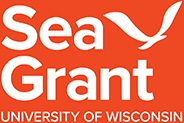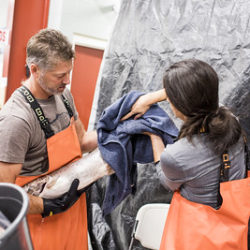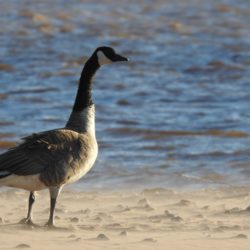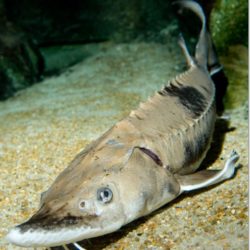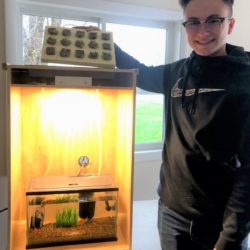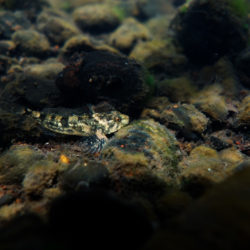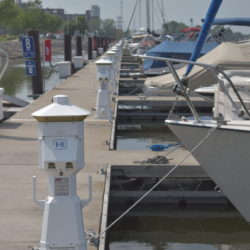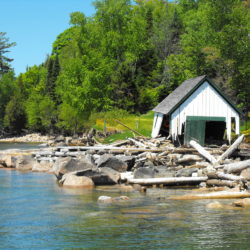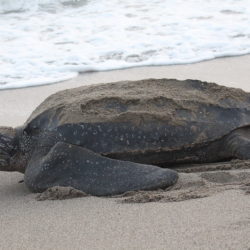Field office graduate research assistant jumps from watershed planning to clams
Megan Hoff recently completed her graduate research assistantship in Green Bay, working for Sea Grant Staffer Julia Noordyk. This was the first time such an opportunity has been offered at one of our field offices. Hoff’s work for Noordyk and for her master’s degree in environmental science and policy at the University of Wisconsin-Green Bay involved working with the community to develop a watershed management plan for Mahon and Wequiock creeks, which flow through the campus. Science Communicator Marie Zhuikov caught up with Hoff recently, just after she finished a drive across the country to Oregon, where she is starting a new job in Newport as a shellfish assessment biologist. Yes, she’ll be working with clams.
